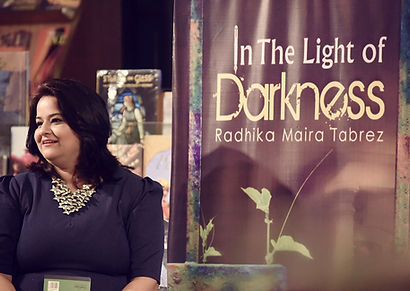Grandma's recipes for life
- radhika-maira-tabrez
- Sep 20, 2016
- 4 min read
This piece was originally written and published in ThnkMkt Magazine.
This Holi, as I stood in line for an hour to buy the overpriced gujiyas from a famous branded sweets shop in Delhi, and then brought them home to a family who was least interested in them – calories, you see! – a long lost memory sparked.
Growing up, Holi had always been about gujiyas. Even more than the colors and the water balloons. Come festival season, my grandmother would get busy in preparing tons and tons of the delicacy. For two days, our house would look like the nukkad halwai shop. It would be an all-hands-on-deck kind of a situation. Some volunteered, some were drafted. But everyone participated. “Where’s the love and gratitude, if you just buy them from the shops?” was her reasoning that did everyone in.
It all started with prepping the most important part – the filling. It’s what inside them, that makes them stand out, she’d say. “Substance matters; in gujiyas and as well as in people!” she’d say.
Finely chopping dry fruits was the first task. They needed to be the perfect size. Too chunky doesn’t mix well with the rest of the filling, but chop them too small and you miss that sweet sense of discerning what you just chewed into. Some years, the fillings would have a lot less dry fruits than usual; the expensive ingredients compromised upon in the name of austerity. “Anyone can do well in abundance; but the real challenge lies in doing equally well with whatever little you have. Doesn’t it?”
Then there was the whole thing about slow roasting the khoya. It was a task meant for the virtuoso. Being entrusted to do that was a badge everyone eyed; very few, manage to earn. You see, it had to be done to the just right golden brown; on a slow and steady flame, while constantly being stirred. One also needed the knack of recognizing that pinnacle of perfection with just the aroma, because the color could be a bit misleading sometimes, especially in poorly lit kitchens. “Focus and patience, are the key mantras. Keep your eye on the ball, and don’t rush to get the results.”; she’d render with a smile.
The only job that came close to the khoya-roasting, expertise-wise, was the fillers’. This after all, was the key step to the whole process, mentioned her pep talk. All the efforts done so far – the finely chopped dry fruits, the golden khoya, and the perfectly rolled circles for the cover – would come to a naught if the stuffing was too little or too much. “Enough- we must understand, is a virtue; not the vice this gluttonous world would have us believe.”
The easiest packing trick for the gujiya was to use a standard spoon and mould, so that the measurement didn’t vary. Also, using a little water, the ends would fuse more seamlessly and permanently. Little cuts made along the circular periphery, not only made the gujiyas more presentable, but also sealed them properly.
Meanwhile, one person would be set on the job of making the sugar syrup to soak the gujiyas in. The way to check whether it was done was to put a drop between your thumb and the index finger. When you tried to pull away, you’d see threads of that sparkly fluid formed between your fingers – one was enough but two or three were perfect. “Sweetness, in our words and our behavior is what makes us all stick together.” she’d say, smiling approvingly at the result.
After the gujiyas were filled and set aside, the final leg was the deep frying of those pastries and soaking them in the sugar syrup. Soaking in the sugar syrup, for too long was a rookie mistake, we were always told to watch out for. It was always better to soak them in a shallow thaal or plate, with just the syrup only as deep as the girth of the gujiya.
Somehow, her gujiyas were always different from the last years’ and yet equally delicious. Sometimes the fillings would have semolina and some years a hint of ground cinnamon and fennel. Sometimes the dry fruits would be roasted with the khoya. One year, she rolled the sugar soaked gujiyas in coconut shavings. My aunts would often inquire why she didn’t stick to just one recipe, like the other cooks. She would reply, flabbergasted, as if it were the most outrageous thought ever; ‘Where’s the fun and learning in that?
No wonder my branded gujiyas, made with expensive and abundant ingredients, and packed in a swanky metal case no less, still failed to pack that punch. They were neither cooked with that sense of endearment, enterprise, or the symbolic wisdom.
But next Holi, guess what my husband and my son would be helping me make? They could volunteer. Or they would be drafted. But by the time our thaal full of gujiya would be ready, they would understand the point of it all.



















留言